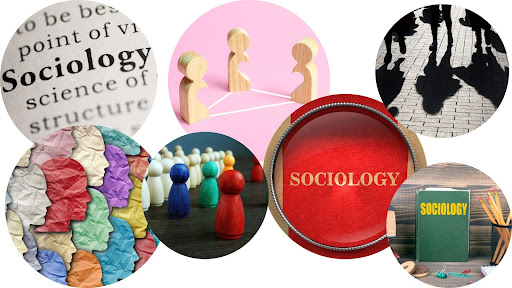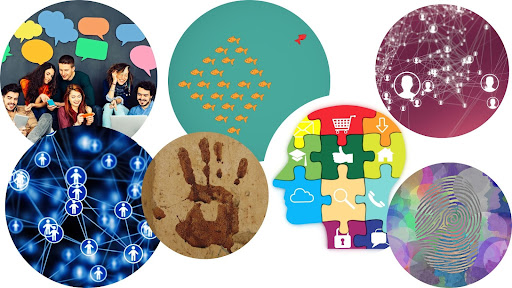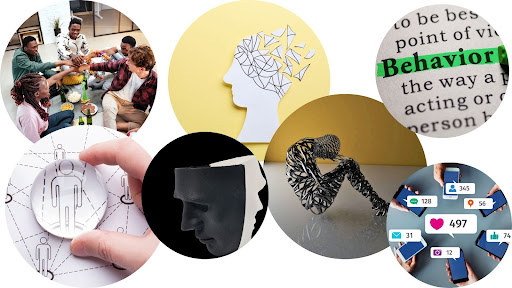-
Homepage


Welcome to the Introduction to Sociology course, part of the series for the Pre-Health Sciences Training Certificate. This course and the certificate are designed primarily for learners interested in preparing for and gaining entry to health-related programs and to help address the prerequisites for the Medical College Admission Test (MCAT).
Our Introduction to Sociology course provides learners with a comprehensive overview of Sociological theories and topics, such as culture, societal structures, social institutions, socialization, and inequality, among others.
The Introduction to Sociology course is sponsored in part by the International Development Research Centre and the University of the Incarnate Word School of Osteopathic Medicine. Like all NextGenU.org courses, it is competency-based, using competencies based on the Association of American Medical Colleges’ Medical College Admission Test. It uses learning resources from accredited, academic, professional, and world-class organizations and universities, such as Rice University. This course was designed by Sherian Bachan, M.Sc., B.Sc.; Alixandria Ali, B.Sc.; Reisha Narine, M.Sc., B.Sc.; Aduke Williams, BA; Rebecca Mahabir, B.Sc., MBA; and Kabiru Gulma, B. Pharm, Ph.D. M.Sc., MBA.
For publications on the efficacy of NextGenU.org’s courses, see NextGenU.org’s publication page.
There are seven (7) modules to complete, which provide an introduction to:Module 1: Introduction to Sociology Theories
Module 2: Social Identity and Social Thinking
Module 3: Socialization and Human Behavior
Module 4: Social Institutions
Module 5: Culture and Society
Module 6: Demographic Structure of Society
Module 7: Social Stratification and InequalityThe completion time for this course is estimated at 63 hours, comprising 15 hours of learning resources, 31 hours of studying and assimilation of the content, and 17 hours of participating in learning activities and quizzes to assist learners in synthesizing learning materials. This course is equivalent to 1 credit hour in the U.S. undergraduate/bachelor’s degree system.
The course requires the completion of all quizzes, discussion forums, and activities to receive a course certificate. Practice quizzes are available throughout the course and contain ten multiple-choice questions each. After completing each module, quiz, and learning activity, at the end of the course, you will have access to a final exam consisting of 40 multiple-choice questions and a chance to evaluate this course. Participants have up to three opportunities to take the final exam and achieve the required passing score of >=70%. Once you have passed the final exam and completed the evaluations, you can download a certificate of completion from NextGenU.org and our course’s co-sponsoring organizations.
We keep your personal information confidential, never sell any of your information, and only use anonymized data for research purposes. Also, we are happy to report your testing information and share your work with anyone (your school, employer, etc.) at your request.
Engaging with this Course:
This free course is for students who have graduated from high school and want to prepare to become a health professional and/or pass the MCAT exam. You may also browse this free course for your personal enrichment. There are no requirements.
To obtain a certificate, a learner must first register for the course and then successfully complete the following:
- The pre-test,
- All the reading requirements,
- All quizzes and pass with 70% with unlimited attempts,
- All discussion forums,
- The final exam with a minimum of 70% and a maximum of 3 attempts, and
- The self and course evaluation forms.
To obtain credit:
- Complete all requirements listed above for the certificate, and
- Your learning institution or workplace should approve the partner-university-sponsored NextGenU.org course for educational credit, as they usually would for their learner taking a course anywhere.
NextGenU.org is happy to provide your institution with the following:
- A link to the description of the course training so they can see all of its components, including the co-sponsoring institution,
- Your grade on the final exam,
- Your work products (e.g., discussion forum responses) and any other required or optional shared materials you produce and authorize to share with them,
- Your evaluations -- course and self-assessments, and
- A copy of your certificate of completion with the co-sponsoring organizations listed.
To obtain a degree, NextGenU.org co-sponsors degree programs with institutional partners. To obtain a full degree co-sponsored with NextGenU.org, registrants must be enrolled in a degree program as a student of a NextGenU.org institutional partner. If you think your institution might be interested in offering a degree with NextGenU.org, contact us.
We hope you will find this a rewarding learning experience, and we count on your assessment and feedback to help us improve this training for future students.
Here are the next steps to take the course and earn a certificate:
- Complete the registration form,
- Take the pre-test, and
- Begin the course with Module 1: Introduction to Sociology Theories. In each lesson, read the description, complete all required readings and any required activity, as well as take the corresponding quizzes.
-
Module 1: Introduction to Sociology Theories
Instructional Goals covered in this module:

- Understand that sociology is a science, highlight its importance, and explain the foundational theories in sociology.
-
Module 1: Lesson 1: Sociology as a Science
Student Learning Outcomes:
Upon completion of this lesson, you will be able to:
- Explain concepts central to sociology.
- Describe how different sociological perspectives have developed.
- Explain why it is worthwhile to study sociology.
- Identify how sociology is applied in the real world.
3 URLs -
Module 1: Lesson 2: The Evolution of Sociology
Student Learning Outcomes:
Upon completion of this lesson, you will be able to:- Explain why sociology emerged when it did.
- Describe how sociology became a separate academic discipline.
- Differentiate between microsociology and macrosociology and their importance in studying social phenomena.
- Describe the ways that sociological theories are used to explain social institutions.
- Differentiate between functionalism, conflict theory, and symbolic interactionism.
4 URLs, 1 Quiz -
Module 2: Social Identity and Social Thinking
Instructional Goals covered in this module:

- Understand social identity and other related key concepts, discuss its importance to human behavior and how cultural norms and values influence social identity, and explain how social comparisons with others and reference groups influence our sense of self.
-
Module 2: Lesson 1: The Role of Social Identity
Student Learning Outcomes:
Upon completion of this lesson, you will be able to:- Explain the concept of social identity and why it is important to human behavior.
- Describe the ways in which social identity intersects with other dimensions of identity, such as race, gender, and sexual orientation.
- Discuss the impact of cultural norms and values on the formation of social identity.
- Explain the concept of the "Looking Glass Self" and how our sense of self is influenced by others’ views of us.
- Explain the concept of reference groups and their role in shaping social identity.
- Describe the Social Comparison Theory and how our sense of self is influenced by comparisons with others.
6 URLs -
Module 2: Lesson 2: Presentation of the Self
Student Learning Outcomes:
Upon completion of this lesson, you will be able to:- Describe the concept of self-presentation and the various strategies used to portray ourselves to others, including the dramaturgical approach.
2 URLs -
Module 2: Lesson 3: Self-Esteem
Student Learning Outcomes:
Upon completion of this lesson, you will be able to:- Define self-esteem, self-concept, and self-efficacy.
- Explain how self-concept is heavily influenced by the process of social comparison.
- Differentiate how upward and downward comparisons influence our self-esteem.
4 URLs -
Module 2: Lesson 4: Self-Development
Student Learning Outcomes:
Upon completion of this lesson, you will be able to:- Identify theories of identity development, including gender, moral, psychosexual, and social.
- Explain the process of moral development.
1 URL, 1 Quiz - Identify theories of identity development, including gender, moral, psychosexual, and social.
-
Module 3: Socialization and Human Behavior
Instructional Goals covered in this module:

- Understand the evolution of society from pre-industrial to post-industrial, highlight the different theoretical perspectives on society, and explain the role of socialization in shaping human behavior.
-
Module 3: Lesson 1: Types of Societies
Student Learning Outcomes:
Upon completion of this lesson, you will be able to:- Describe the difference between preindustrial, industrial, and postindustrial societies.
- Explain the role of the environment in preindustrial societies.
- Interpret the ways that technology impacts societal development and the socialization process.
2 URLs, 1 Forum -
Module 3: Lesson 2: Theoretical Perspectives on Society
Student Learning Outcomes:
Upon completion of this lesson, you will be able to:- Describe Durkheim’s functionalist view of society.
-
Summarize the conflict theorist's view of society.
- Explain Marx’s concepts of class and alienation.
- Identify how symbolic interactionists understand society.
- Interpret the sociological concept of reality as a social construct.
- Define roles and describe their places in people’s daily interactions.
- Explain how individuals present themselves and perceive themselves in a social context.
3 URLs, 1 Forum -
Module 3: Lesson 3: Importance of Socialization
Student Learning Outcomes:
Upon completion of this lesson, you will be able to:- Describe the importance of socialization, both for individuals and society.
-
Explain the nature versus nurture debate.
- Discuss the concept of social influence, including persuasion, social norms, and their impact on behavior.
- Explain how socialization occurs and recurs throughout life.
- Apply socialization to age-related transition points.
- Describe when and how resocialization occurs.
3 URLs, 1 Forum -
Module 3: Lesson 4: Groups and Organizations
Student Learning Outcomes:
Upon completion of this lesson, you will be able to:- Differentiate between primary and secondary groups.
-
Define reference groups.
- Recognize in-groups and out-groups as subtypes of primary and secondary groups.
- Explain the ways that size influences group dynamics.
- Differentiate among styles of leadership.
- Interpret the impact of groups on individual behavior.
- Distinguish the types of formal organizations.
- Recognize the characteristics of bureaucracies.
- Identify the impact of McDonaldization on society.
5 URLs, 1 Forum, 1 Quiz -
Module 4: Social Institutions
Instructional Goals covered in this module:

Understand the role of social institutions and their impact on human behavior and society, including the effects of socialization on identity formation, the reproduction of social inequality, and the maintenance of social order, and apply sociological theories and concepts to analyze real-world examples of social institutions.
-
Module 4: Lesson 1: Education
Student Learning Outcomes:
Upon completion of this lesson, you will be able to:- Discuss how educational segregation and stratification shape individual behavior.
- Define manifest and latent functions of education and the role of hidden curriculum.
- Explain how teacher expectancy and self-fulfilling prophecy shapes human behavior.
3 URLs -
Module 4: Lesson 2: Family
Student Learning Outcomes:
Upon completion of this lesson, you will be able to:- Describe society’s understanding of family.
- Recognize variations in family life.
- Discuss the social impact of changing family structures.
- Describe the social and interpersonal impact of divorce.
- Describe the social and interpersonal impact of family abuse.
4 URLs, 1 Forum -
Module 4: Lesson 3: Religion
Student Learning Outcomes:
Upon completion of this lesson, you will be able to:- Define religiosity.
- Describe the differences between various types of religious organizations.
- Discuss changing trends in religion, religious beliefs, and the rise of secularization.
3 URLs -
Module 4: Lesson 4: Government and Economy
Student Learning Outcomes:
Upon completion of this lesson, you will be able to:- Define and differentiate between power and authority.
- Identify and describe the three types of authority.
- Define common forms of government, such as monarchy, oligarchy, dictatorship, and democracy.
- Differentiate the ways that functionalists, conflict theorists, and interactionists view government and politics.
3 URLs, 1 Forum -
Module 4: Lesson 5: Health and Medicine
Student Learning Outcomes:
Upon completion of this lesson, you will be able to:- Define medical sociology.
-
Differentiate between the cultural meaning of illness, the social construction of illness, and the social construction of medical knowledge.
- Discuss the concept of medicalization and how it impacts society.
- Explain the concept of illness experience and its impact on the individual and society.
- Describe the impact of healthcare delivery systems on individuals and society.
- Explain the impact of social, cultural, and environmental factors on the distribution of illness and health outcomes in populations.
- Discuss the theoretical perspectives on health and medicine.
11 URLs, 1 Forum, 1 Quiz -
Module 5: Culture and Society
Instructional Goals covered in this module:

Understand key concepts related to culture, explain the role of culture in shaping human behavior, values, beliefs, and norms in different societies, and discuss the evolution of culture over time.
-
Module 5: Lesson 1: Introduction to Culture
Student Learning Outcomes:
Upon completion of this lesson, you will be able to:- Describe the elements of culture, including beliefs, language, rituals, symbols, and values.
- Differentiate between material and symbolic culture and explain their significance in society.
- Discuss the concept of culture lag and its impact on social change.
- Explain the concept of culture shock and its effects on individuals and society.
4 URLs -
Module 5: Lesson 2: Changing Dynamics in Culture
Student Learning Outcomes:
Upon completion of this lesson, you will be able to:- Describe the process of assimilation and its impact on cultural diversity.
- Discuss the concept of multiculturalism and its impact on contemporary society.
- Identify the characteristics of subcultures and countercultures in contemporary society.
- Discuss the role of mass media and popular culture in shaping societal values and beliefs.
- Describe the transmission and diffusion of culture across societies and their impact on cultural diversity.
6 URLs, 1 Forum, 1 Quiz -
Module 6: Demographic Structure of Society
Instructional Goals covered in this module:

- Understand the patterns of demographic changes in society, explain factors influencing population growth and changes, and apply sociological theories on demographic changes.
-
Module 6: Lesson 1: Demographic Characteristics
Student Learning Outcomes:
Upon completion of this lesson, you will be able to:- Recognize the demographic structure of society, including age, gender, race and ethnicity, immigration status, and sexual orientation.
- Explain the aging process and the life course, as well as the social significance of aging.
- Differentiate between sex and gender.
- Analyze the social construction of gender and gender segregation.
- Discuss the social construction of race, racialization, and racial formation, and their impact on society.
- Discuss population growth and decline, including population projections and population pyramids.
- Explain theories of demographic change.
7 URLs -
Module 6: Lesson 2: Population Growth and Urbanization
Student Learning Outcomes:
Upon completion of this lesson, you will be able to:- Describe the patterns in population change, including fertility and mortality rates and push and pull factors in migration.
- Evaluate globalization and contributing factors.
- Discuss perspectives on globalization and social change including its impact on modernization.
- Describe the process of urbanization and the growth of urban populations worldwide.
- Discuss the function of suburbanization, gentrification, and urban renewal, and their impact on society.
- Discuss urbanization from various sociological perspectives.
10 URLs, 1 Forum, 1 Quiz -
Module 7: Social Stratification and Inequality
Instructional Goals covered in this module:

- Understand social stratification, social inequality, and social mobility, including the mechanisms and barriers that shape individuals' life chances and opportunities in economic, educational, and occupational hierarchies, focusing on the intersectional effects of race, gender, and class, and apply sociological theories.
-
Module 7: Lesson 1: Social Stratification of Society
Student Learning Outcomes:
Upon completion of this lesson, you will be able to:- Explain the concept of social stratification and its different aspects, including social class and socioeconomic status.
- Differentiate between class consciousness and false consciousness and how they impact social change.
- Describe the significance of cultural capital and social capital in social mobility.
- Discuss the concept of social reproduction and its role in perpetuating inequality.
- Explain power, privilege, and prestige in the context of social stratification.
- Discuss how race, gender, and age intersect to create multiple levels of inequality.
- Identify global inequalities and explain their causes and consequences.
- Recognize patterns of social mobility, including intergenerational and intragenerational mobility, and vertical and horizontal mobility.
- Discuss the concept of meritocracy and its implications for social mobility.
12 URLs, 1 Quiz -
Course and Self Evaluation & Certificate
 In this section, you can provide feedback about this course to help us make NextGenU.org better. Once evaluations are completed, you will be able to download your certificate of completion.
In this section, you can provide feedback about this course to help us make NextGenU.org better. Once evaluations are completed, you will be able to download your certificate of completion.
Intro to Sociology
Register for this course to access the discussion forums


